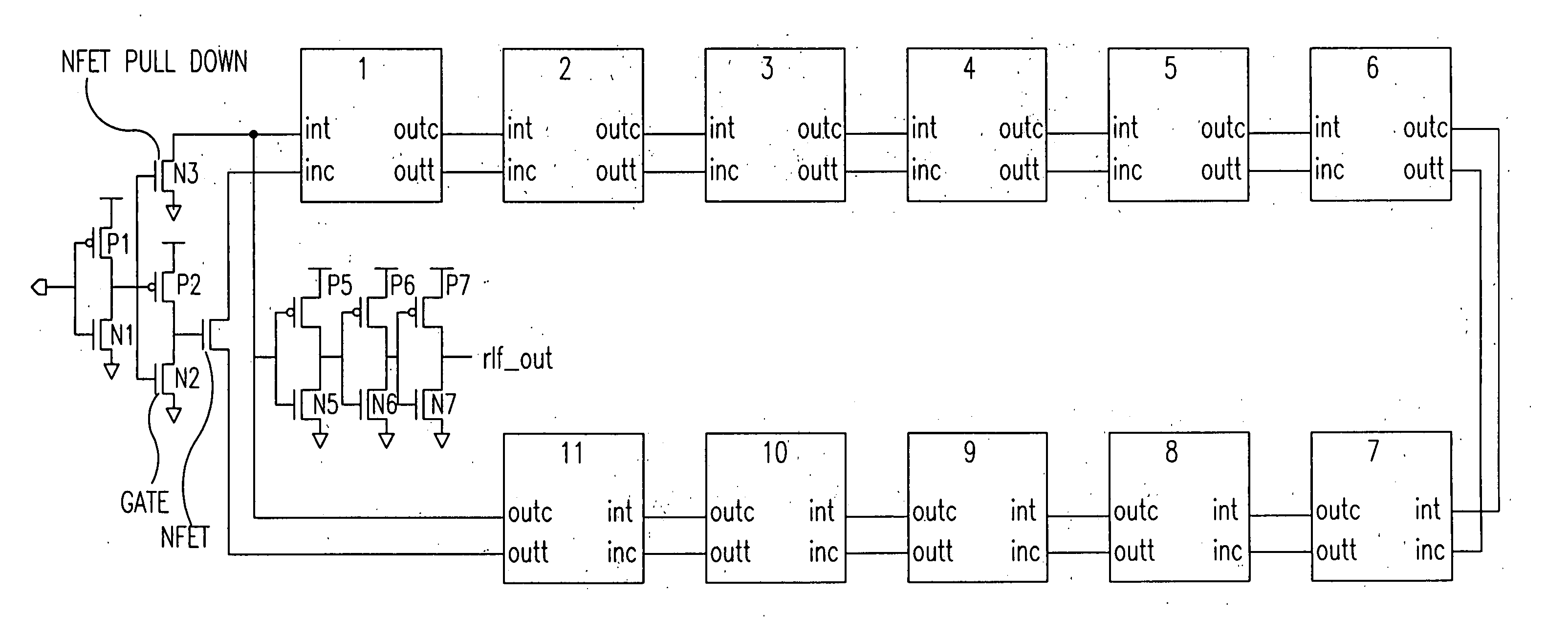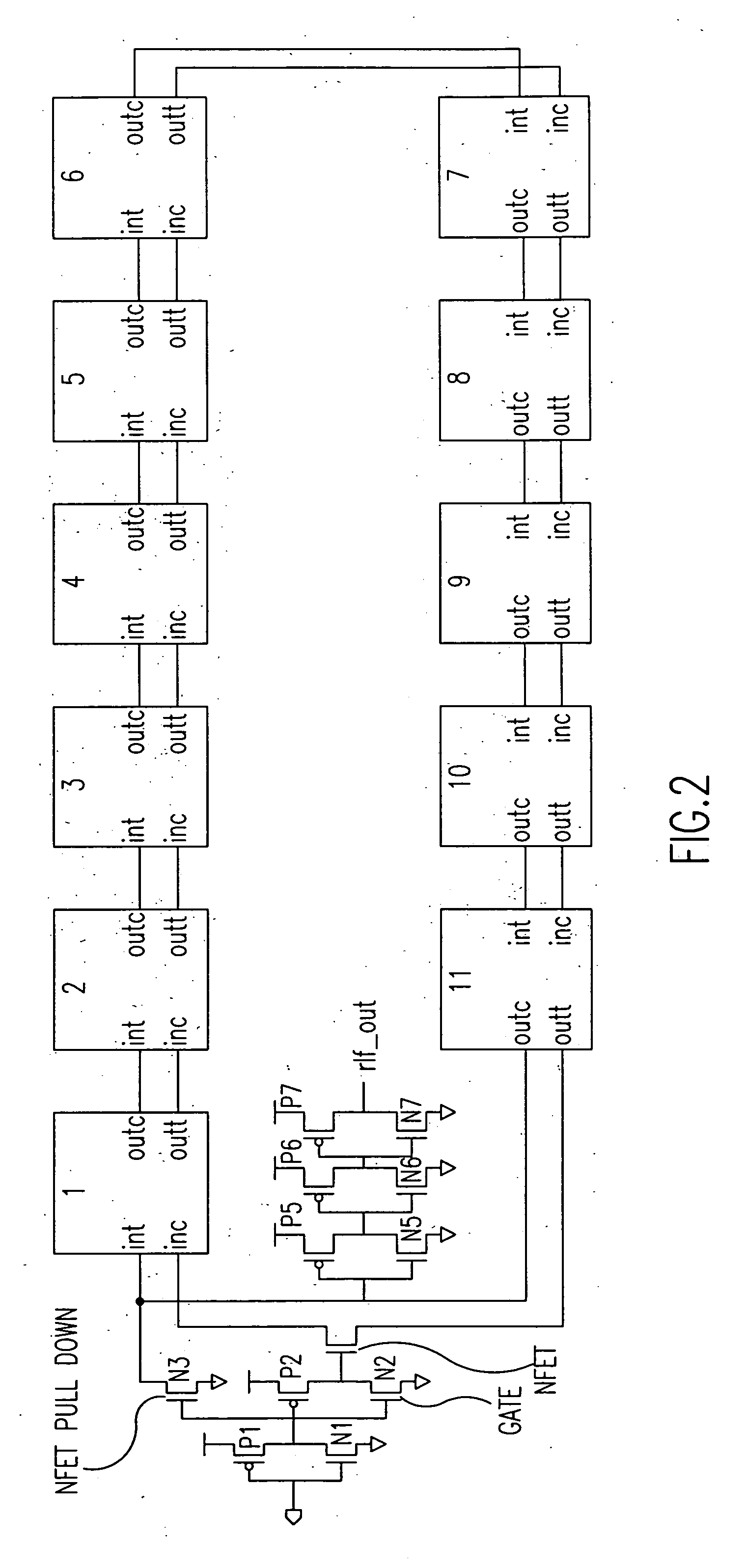Sram ring oscillator
a ring oscillator and sram technology, applied in the field of circuit typology, can solve the problems of inability to accurately predict ac read/write operations in sram memory arrays, inability to use fet models that are used to model hardware, and inability to accurately predict ac read/write operations in fet models. achieve the effect of accurate model to hardware correlation and easy construction
- Summary
- Abstract
- Description
- Claims
- Application Information
AI Technical Summary
Benefits of technology
Problems solved by technology
Method used
Image
Examples
Embodiment Construction
[0014] Referring now to FIG. 1 of the drawings, it shows a typical so called six transistors SRAM cell, modified in accordance with the teachings of this invention. It is comprised of complementary, cross-coupled, FET inverter pairs pl-nl, and pr-nr. But unlike a typical SRAM cell, the pass gates sl and sr of the cell are coupled to the gates of the corresponding cross-coupled inverter pairs, pl-nl and pr-nr, respectively. Coupled as a dual phase, ring oscillator, the two complementary inputs to each cell are int and inc, and the two complementary outputs are outc and outt.
[0015]FIG. 2 shows a series eleven SRAM cells, each with the topology shown in FIG. 1, interconnected to form a dual phase ring oscillator. The outputs outc and outt of each cell in the series is coupled to the complementary inputs int and inc respectively of the next cell. That is, the output outt, shown in FIG. 1, of each cell in the series is connected to the input inc of the next cell and the output outc is c...
PUM
 Login to View More
Login to View More Abstract
Description
Claims
Application Information
 Login to View More
Login to View More - R&D
- Intellectual Property
- Life Sciences
- Materials
- Tech Scout
- Unparalleled Data Quality
- Higher Quality Content
- 60% Fewer Hallucinations
Browse by: Latest US Patents, China's latest patents, Technical Efficacy Thesaurus, Application Domain, Technology Topic, Popular Technical Reports.
© 2025 PatSnap. All rights reserved.Legal|Privacy policy|Modern Slavery Act Transparency Statement|Sitemap|About US| Contact US: help@patsnap.com



